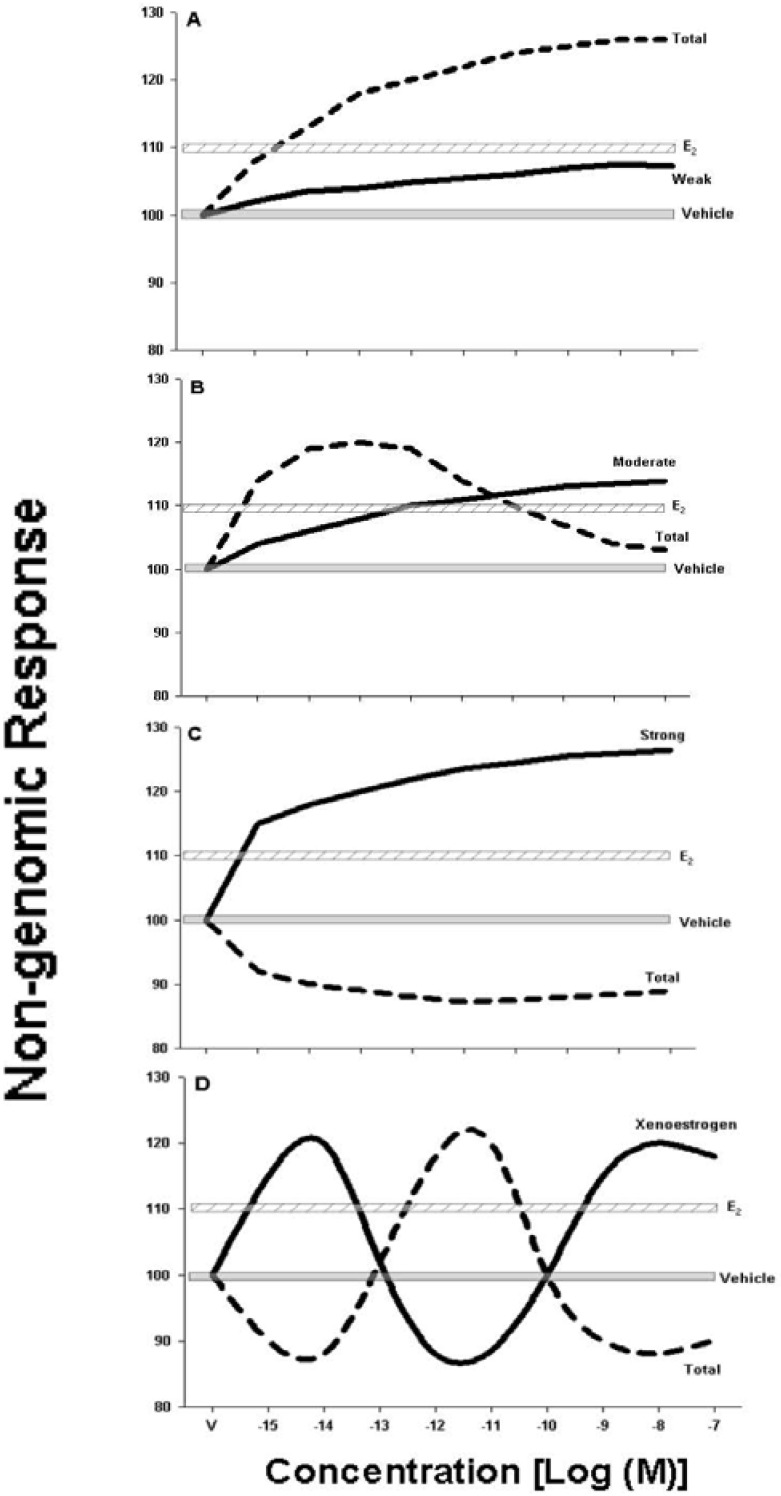Figure 1.
Working model of xenoestrogen (XE) alteration of physiologic estrogen non-genomic response effects. XEs of increasing dose were used to challenge the responses of the physiologic estrogen estradiol (10−9 M E2). These combinations examples are mainly summarized from [25,26]. In each case the vehicle control (V) and 10−9 M E2 responses are shown by horizontal bars. The response to an XE alone is shown by a solid line, and the combination of 10−9 M E2 plus the XE is shown by a dashed line. The types of combination responses are: (A) A weak XE enhances the physiologic estrogen E2response; (B) A moderate XE response enhances the E2 response at low concentrations, and inhibits it at higher concentrations; (C) The strongest XE inhibits the E2 response at all concentrations, with increasing inhibition as the XE concentration increases; and (D) If the XE exhibits a fluctuating non-monotonic estrogenic response, the effect on the E2 response also fluctuates, in line with cases A–C above. These idealized data summarize what we have seen in combinations using a variety of XEs. Depending on the estrogenic potency of the XE, when paired with a physiologic estrogen, an inverse relationship in responses occurs (enhancement or attenuation).

